Season 17 of Doctor Who holds a unique place in the hearts of fans, often sparking debate and divided opinions. For some, it’s a cherished memory of childhood, while others view it as a flawed chapter in the show’s long history. Released as part of Doctor Who: The Collection – Season 17 on Blu-ray, this season invites a fresh look, prompting us to re-evaluate its merits and shortcomings.
My own journey with Season 17 began in the late 1970s. Like many young viewers, I was captivated by the Fourth Doctor’s adventures, even if my friends sometimes scoffed. I vividly remember choosing to stay in and watch a “Doctor Who” repeat over playing outside, much to the amusement of my friend Martin. His dismissive comment, “It’s only the one where he goes on holiday,” referred to City of Death, now celebrated as a classic. While friendships may drift, my appreciation for City of Death and Season 17 has endured, evolving through Betamax tapes to VHS, DVD, and now, this pristine Blu-ray release.
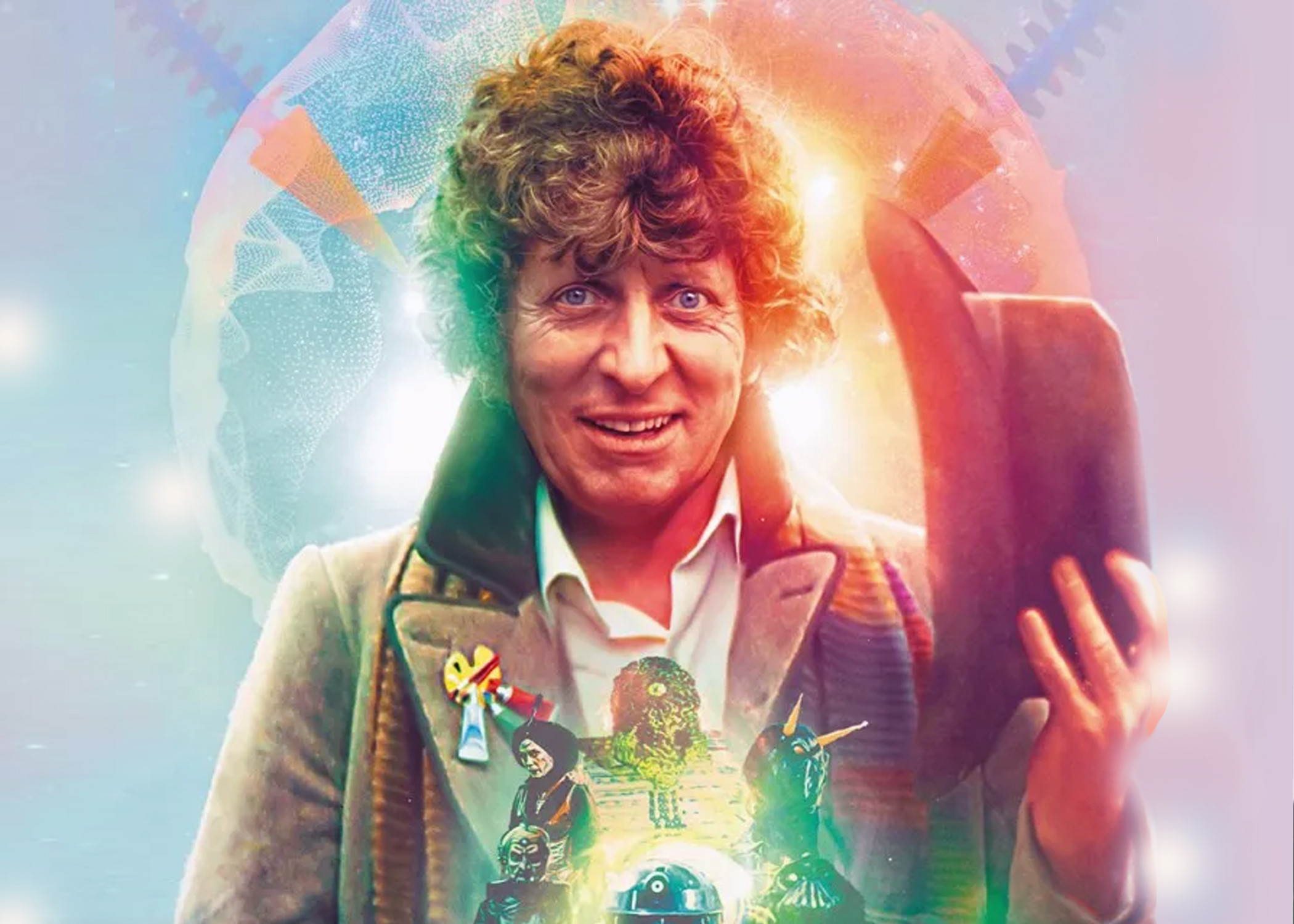 Tom Baker as the Doctor and Lalla Ward as Romana II in Doctor Who Season 17
Tom Baker as the Doctor and Lalla Ward as Romana II in Doctor Who Season 17
Season 17 is undeniably a mixed bag, a point of contention among Doctor Who fandom across generations. In the 1980s, some fans criticized its perceived cheapness compared to the glossier Season 18. Later, in the 1990s, some contrarians championed stories like The Horns of Nimon, placing them alongside series masterpieces – a view many still contest. Yet, for me, Season 17 remains special. It represents the last season I experienced purely through the innocent eyes of childhood. I never perceived it as cheap or silly then, and its nostalgic pull outweighs any technical shortcomings. While Season 18’s revamp was visually polished, it lacked the same personal resonance. It wasn’t until re-watching these Season 17 episodes in my twenties that the less-than-perfect creature design of Erato in Creature from the Pit became apparent.
Budget Constraints and Creative Sparks
Season 17 often faces criticism, and truthfully, it’s an easy target. Stories like Nightmare of Eden and The Horns of Nimon openly display the budgetary limitations of the time. However, what the season lacked in financial resources, it compensated for with creativity and distinctive style. Budget cuts were a reality across the BBC in the late 70s, evident in other effects-heavy series like Blake’s 7 and The Goodies.
Adding to the production dynamic was Tom Baker, the Fourth Doctor, who by this point in his tenure, was becoming more assertive and injecting his own ideas into the show. It’s often possible to pinpoint lines and bits of physical comedy that seem distinctly Baker’s additions, sometimes feeling slightly out of sync with the overall tone. This highlighted a creative tension between Baker’s vision for Doctor Who in 1979 and that of producer Graham Williams, with Baker’s influence frequently prevailing.
The Douglas Adams Effect
The presence of Douglas Adams as script editor is a defining element of Season 17. As the creator of The Hitchhiker’s Guide to the Galaxy, Adams was on the cusp of major success when he joined Doctor Who. While his attention may have been divided, his distinctive comedic and imaginative signature is unmistakable throughout the season. City of Death, co-written with Graham Williams from a David Fisher script, is a prime example of this “Adamsian” touch, benefiting immensely from his wit and style. While acknowledging the contributions of other writers, Adams’ involvement arguably rescued Season 17 from becoming overly formulaic. He injected a vital dose of adrenaline, revitalizing the series with his unique brand of humor and science fiction sensibility.
Destiny of the Daleks: Comfort Food Who
Destiny of the Daleks is a personal favorite, a comfort watch. In times of gloom, illness, or general malaise, this story is a reliable mood-lifter. It’s lighthearted, engaging without demanding intense concentration, and genuinely fun. Some Doctor Who fans fixate on minor details, allowing them to overshadow their enjoyment of a story. In Destiny of the Daleks, a common point of criticism is the recasting of Davros, with David Gooderson replacing Michael Wisher. However, Gooderson’s performance is commendable, and any perceived issues are largely due to a slightly ill-fitting mask. Similarly, David Brierley capably replaced John Leeson as the voice of K-9. It’s important to remember that actors are professionals who may become unavailable, and the show must adapt. A certain segment of fandom, for whom Doctor Who is life-consuming, sometimes overlooks this practical reality.
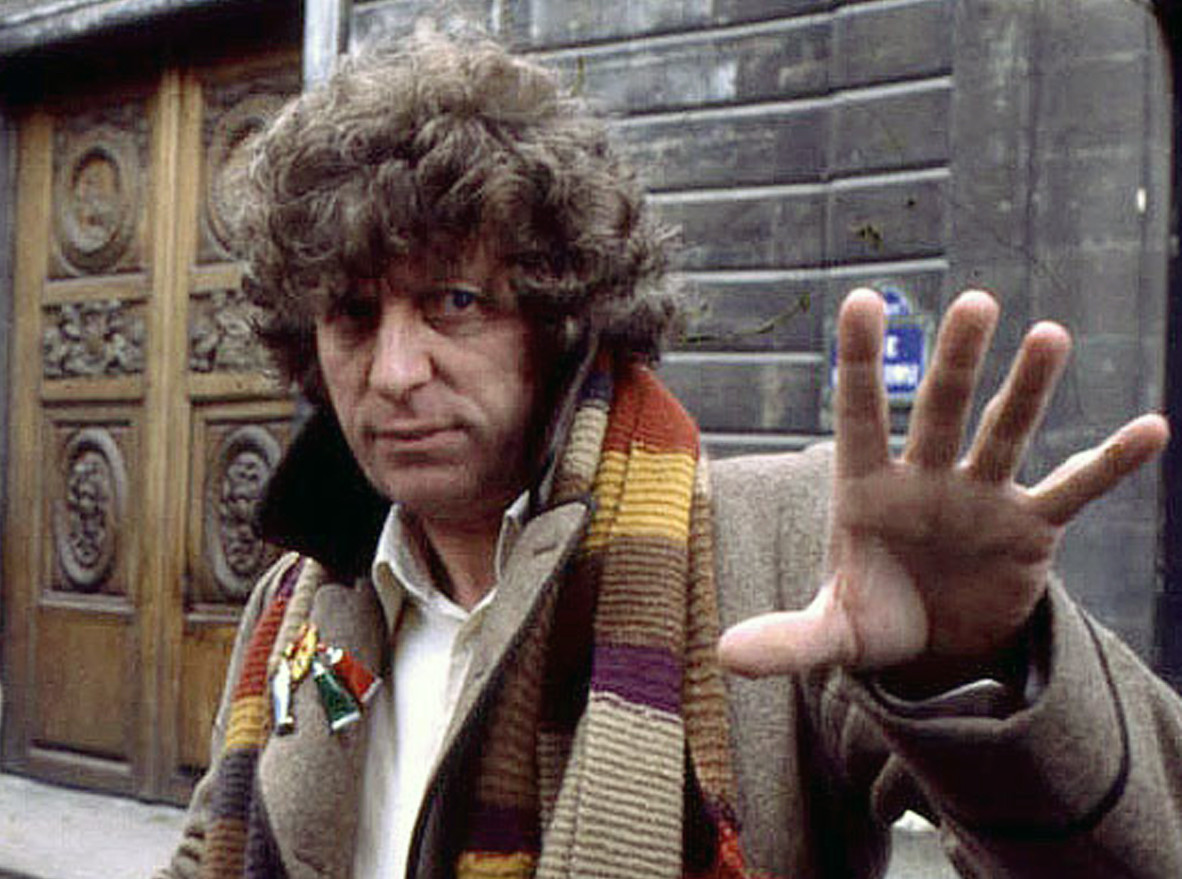 The Daleks confront Romana and the Doctor in Destiny of the Daleks
The Daleks confront Romana and the Doctor in Destiny of the Daleks
The Dalek props in this story do exhibit noticeable wear and tear. Close-ups reveal reinforcing metal strips and patched panels, unintentionally adding to the narrative of a Dalek empire in decline, struggling in their war against the Movellans and desperately seeking guidance from Davros. The Movellans themselves are underappreciated Doctor Who aliens. As disco-era robot warriors, their design is effective, and their pristine appearance contrasts sharply with the battle-damaged Daleks. While their aesthetic might evoke Buck Rogers, it was fitting for the late 70s sci-fi trends. Interestingly, the extras for Destiny of the Daleks don’t highlight the progressive casting of the Movellans. This serial is notably multi-racial for its time, a characteristic that remained significant for many years.
While the extent of Terry Nation’s original script remains debated, Douglas Adams’ influence is evident in the witty dialogue, which enhances the story. The chemistry between Tom Baker and Lalla Ward, newly introduced as Romana II, is instantly apparent, their on-screen dynamic reminiscent of Patrick Macnee and Diana Rigg in The Avengers. The plot, though simple, is conceptually strong: two logical warring races locked in stalemate, a classic science fiction trope that Doctor Who handles expertly. Adams’ dialogue elevates the hard sci-fi concept, injecting it with distinct Doctor Who charm, proving that stories don’t always need magic or whimsy to be captivating – a valuable lesson for contemporary writers of the series.
Destiny of the Daleks features extensive location filming, particularly in its first episode. Director Ken Grieve effectively uses the stark quarry setting to represent Skaro, and the sound design for moving artificial rocks adds a deliberate harshness to the environment. Despite being filmed largely in daylight, Skaro feels genuinely unwelcoming. Studio filming is equally inventive, with low-angle shots enhancing the Daleks’ menacing presence. They are portrayed as true bullies in this story. Destiny of the Daleks has much to commend it, and despite budget limitations, it looks better than ever on Blu-ray. It could have been the season’s best story, were it not followed by City of Death.
City of Death: A Parisian Masterpiece
What can be said about City of Death that hasn’t already? It’s a story that, like a fine wine… No, that approach feels outdated, reminiscent of 1980s fanzine introductions. City of Death was, and remains, beloved by fans. While some classic stories, when revisited on VHS and DVD, failed to live up to their legendary reputations, City of Death has maintained its high standing. It’s simply excellent entertainment, devoid of unnecessary complexity, delivering exactly what’s needed at the end of the day.
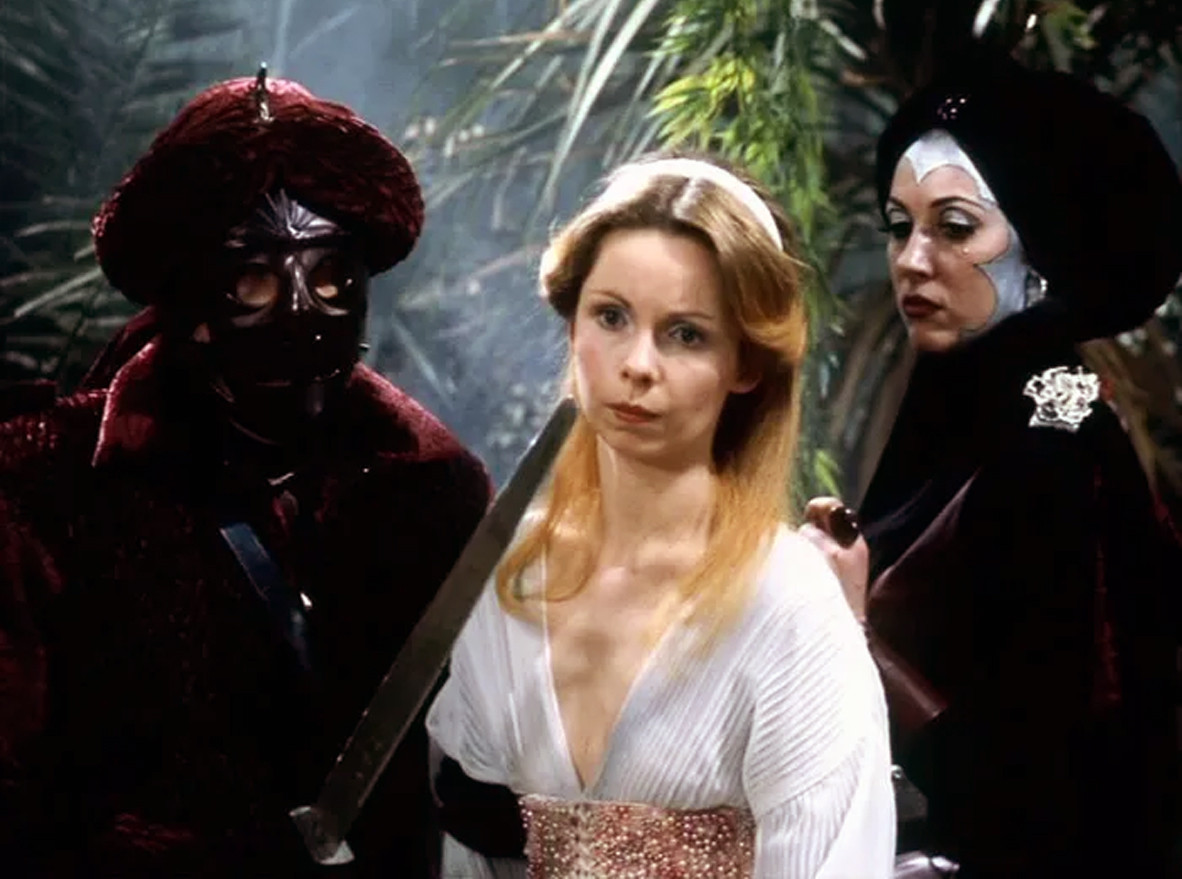 The Doctor and Romana in front of the Eiffel Tower in City of Death
The Doctor and Romana in front of the Eiffel Tower in City of Death
City of Death marked Doctor Who’s first foray into overseas filming in Paris, adding a cinematic quality previously unseen in the series. The Parisian locations seamlessly blend with studio sets, almost imperceptibly. While the first two stories of Season 17 benefit from strong film work, it unfortunately sets a high visual benchmark that later stories struggle to match. But focusing on City of Death, its charm is undeniable. Tom Baker and Lalla Ward are at their peak. Despite Romana II being newly introduced in the previous story, Lalla Ward is instantly perfect in the role. Her performance is captivating, and her schoolgirl outfit, while an unconventional choice, adds to the story’s quirky charm. The Parisian setting further enhances the story’s whimsical nature, with neither the Doctor nor Romana attracting undue attention as they navigate the bustling streets.
The guest cast is exceptional, featuring Julian Glover as the suave Count Scarlioni/Scaroth, Catherine Schell as the elegant Countess, Tom Chadbon as the forceful Duggan, and David Graham as the anxious Professor Kerensky. Adding to this stellar lineup are a cameo from John Cleese and Eleanor Bron as art enthusiasts, a testament to Douglas Adams’ well-connected social circle. Duggan stands out as one of Doctor Who’s most memorable one-off supporting characters, portrayed with robust charm by Tom Chadbon. His memorable presence solidified his place in Doctor Who lore.
Much has been written and analyzed about City of Death, particularly within fan publications. Yet, it remains endlessly enjoyable to watch, enhanced by the Blu-ray transfer. Dudley Simpson’s score, arguably the best in Doctor Who history, benefits significantly from the improved sound quality. A soundtrack album of Simpson’s score would be a welcome addition for fans. Perhaps Season 17’s primary issue is peaking too early; subsequent stories struggle to reach the heights of Destiny of the Daleks and City of Death.
The Creature from the Pit: Beyond the Misconception
I’ve always held a soft spot for The Creature from the Pit. Its reputation as a misfire seems largely attributed to a single, unfortunate visual effect. The creature, Erato, in certain scenes, bears an unintended resemblance to a phallic object. Tom Baker’s playful interaction with the prop only exacerbates this perception, a moment of collective misjudgment. It’s a shame this single element overshadows the story’s other merits. For instance, the studio-created jungle of Chloris is remarkably well-realized, especially when compared to the sparser jungle set in Kinda a few years later. The misty, saturated film stock lends a dreamlike quality to the visuals.
 The Doctor and Romana encounter the Creature from the Pit
The Doctor and Romana encounter the Creature from the Pit
The performances in The Creature from the Pit are also noteworthy. Myra Francis portrays Lady Adrasta with a compelling blend of allure and cruelty. Doctor Who veteran Eileen Way is memorable as Karela, and Geoffrey Bayldon, known for Catweazle and once considered for the role of the Doctor, delivers a strong performance as Organon. John Bryans plays Torvin, the leader of scavengers, with a hint of Oliver Twist’s Fagin, a characterization that perhaps could have been toned down. This points to a slight issue with some performances in Creature from the Pit: a sense of overacting, possibly influenced by a somewhat unrestrained lead actor. This tendency becomes more pronounced in the subsequent stories.
David Fisher’s script, despite production shortcomings, has much to offer. It presents Chloris as a matriarchal society where men are subservient, a subtle social commentary handled without heavy-handedness. When Karela meets Romana, she assumes Romana is in charge and the Doctor is her subordinate. This is presented as a nuanced detail rather than an overt message. Fisher’s novelization of Creature from the Pit expands on these themes and provides a clearer vision of the creature as an amorphous entity stretching across vast underground tunnels. Creature from the Pit had a reasonable budget, evident in the impressive forest sets, and the script was imaginative. The story’s failure to fully realize its potential remains somewhat enigmatic, but it’s clear that production issues hampered its overall impact.
Nightmare of Eden: A Self-Parody?
If you were to ask a typical 1970s viewer to describe a Doctor Who episode, they might unwittingly describe Nightmare of Eden: silver jumpsuits, lumbering monsters, earnest young actors, and more seasoned actors seemingly less engaged. The story unintentionally embodies every unflattering cliché associated with Doctor Who during the Tom Baker era. It’s almost a self-parody. Rarely did the series exhibit wobbly sets, sparkly costumes, and monsters with visible seams to the extent that the media often satirized… yet, Nightmare of Eden seems to encompass all these elements.
Nightmare of Eden was a troubled production. Veteran director Alan Bromly, unfamiliar with the special effects, clashed with Tom Baker, leading to Bromly’s mid-production departure and replacement by Graham Williams. The on-set tension might explain the actors’ somewhat lackluster performances. Lewis Fiander, as scientist Tryst, adopts an exaggerated European accent, undermining the character’s gravitas, particularly as he is revealed to be a villain. Questionable wardrobe choices contribute to the pantomime atmosphere: policemen with glittery epaulettes, spaceliner passengers in pac-a-macs. At best, it resembles a children’s show; at worst, an amateur parody. The Mandrell monsters, created by the BBC Costume Department rather than Special Effects, further enhance the low-budget, fancy-dress feel.
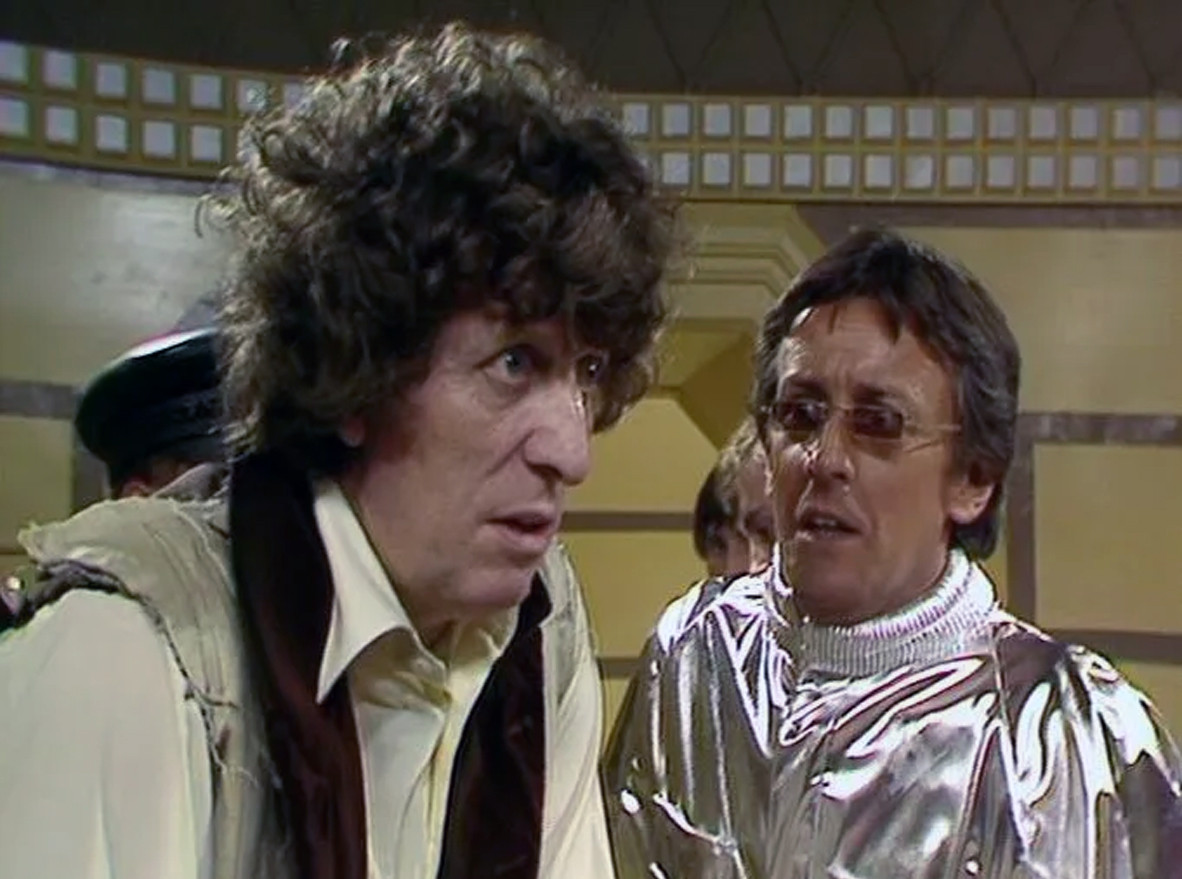 The Mandrells in Nightmare of Eden
The Mandrells in Nightmare of Eden
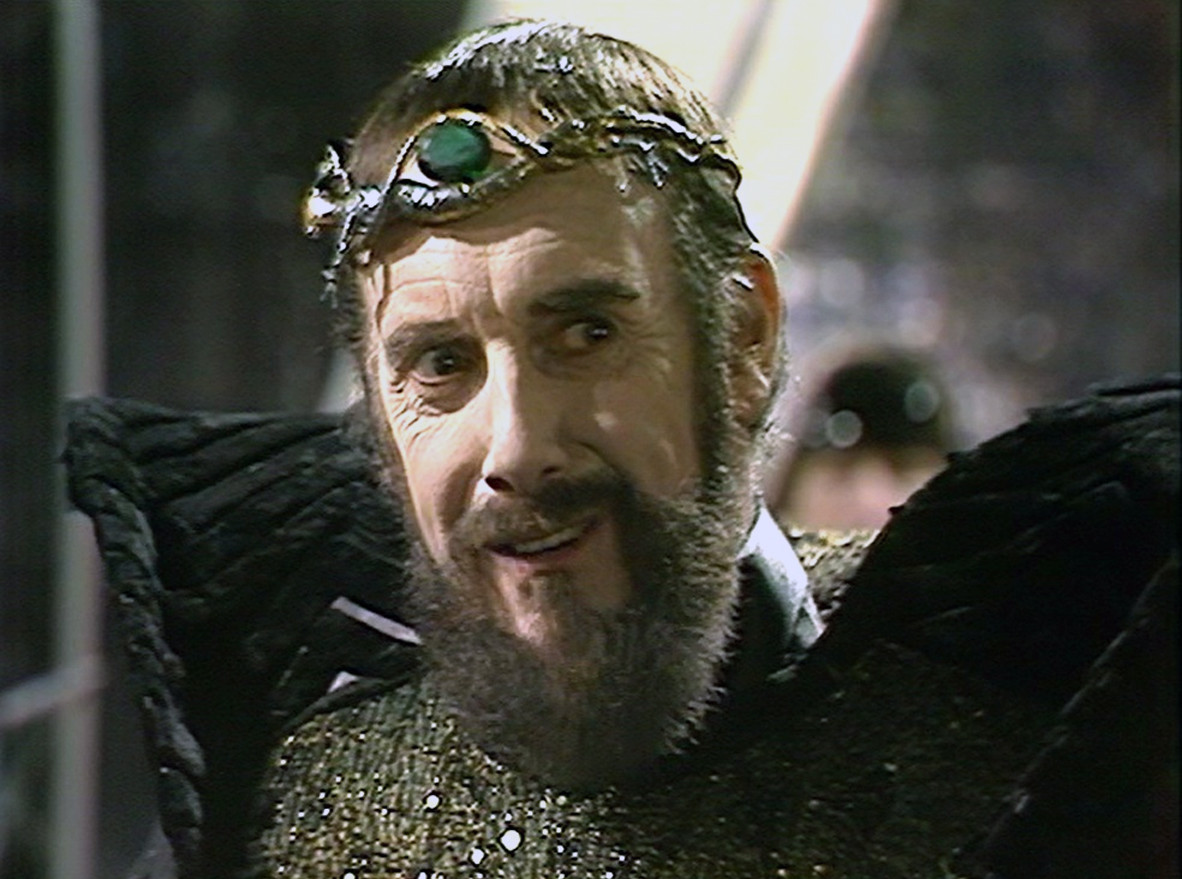 The Doctor and Romana in Nightmare of Eden
The Doctor and Romana in Nightmare of Eden
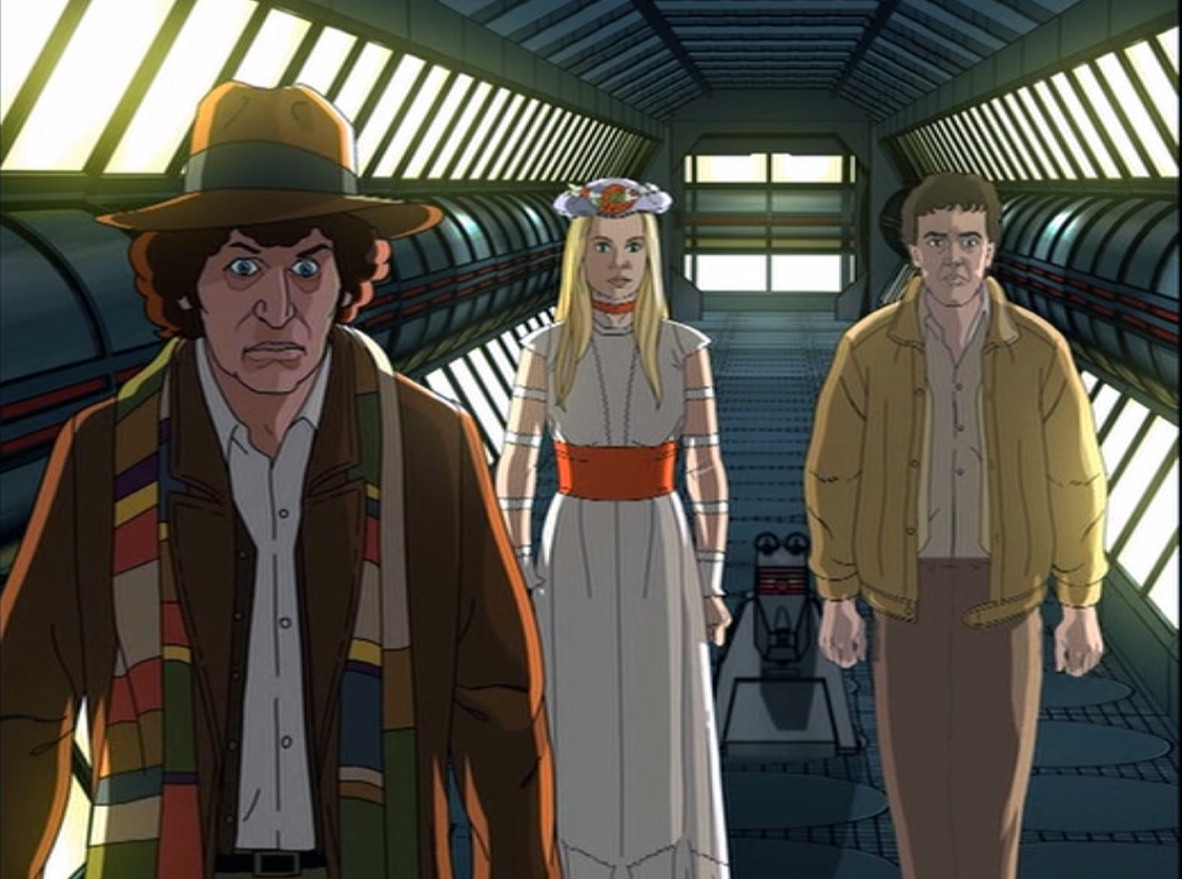 Nightmare of Eden spaceship interior
Nightmare of Eden spaceship interior
Writer Bob Baker conceived Nightmare of Eden as a quick, inexpensive story, but its final appearance likely exceeded even his low expectations in terms of budget aesthetics. The core sci-fi concept – two spaceships merging after simultaneous hyper-drive emergence – is intriguing, but undermined by weak special effects. The story attempts to address drug abuse, a serious theme, but the message is lost amidst sparkly costumes, flared trousers, and overall silliness. With more resources, time, and a less fraught production, Nightmare of Eden could have been compelling. Instead, like its predecessor, it suffers from shortcomings across various production aspects. Ironically, this is the type of Doctor Who episode many casual viewers remember from the 70s: a production seemingly not taken seriously, despite genuine efforts to create engaging television against numerous obstacles.
The Horns of Nimon: Misjudged or Just Rushed?
While City of Death enjoys a reputation of excellence, The Horns of Nimon is often considered its polar opposite. For years, I ranked it among the lowest classic Doctor Who stories, second only to Time and the Rani. However, re-watching it reveals some unexpected enjoyment. It remains flawed – exceptionally so – but certain aspects deserve a re-evaluation. The sets, for example, viewed on poor-quality VHS, appeared to be flimsy flats against a grey backdrop. On Blu-ray, the painted cyclorama becomes appreciable for the first time. Other sets are reasonably well-constructed, though painted in drab colors and filmed from uninspired angles, lacking foley or sound effects, resulting in a hollow, stage-bound feel.
The primary issue with The Horns of Nimon isn’t cheapness, but rather its rushed production. Numerous scenes clearly needed retakes due to flubbed lines or malfunctioning props, yet director Kenny McBain seemingly opted for speed over polish, likely under pressure to deliver the serial on time to prioritize the more complex season finale, Shada. June Hudson’s costume designs are typically flamboyant, but the Nimon themselves are poorly conceived. Staggering in platform shoes with top-heavy masks, they appear more comical than menacing. However, Romana’s hunting pink costume is one of her most iconic outfits of this era.
Anthony Read’s script, his sole writing credit as outgoing script editor, is loosely based on the Greek myth of Theseus and the Minotaur, hence the bull-like Nimon. Similar to Underworld from 1977, another Doctor Who story drawing from Greek mythology, any attempt at mythic grandeur is undercut by budget constraints. The Horns of Nimon could have been visually stunning with sufficient resources to match its ambitious plot, but sadly, it falls short. Amidst these shortcomings, Graham Crowden, a respected character actor, guest stars as the villain Soldeed. Perhaps influenced by Tom Baker’s eccentricity, Crowden’s performance leans towards pantomime villainy, resembling Abanazar in a local Christmas show. Nightmare of Eden and The Horns of Nimon might have been less disappointing had they been part of a season culminating in Douglas Adams’ epic Shada. However, industrial action disrupted Shada’s production, leaving Season 17 to conclude on the anticlimactic note of The Horns of Nimon. Or did it?
Shada: A Reconstruction and a Redemption
In the 1980s, CIC Video released a VHS tape of the then-unseen Star Trek pilot, The Cage. Lacking a full-color version, the release combined black and white sequences with color footage repurposed in The Menagerie. Despite the jarring shifts in picture quality, viewers quickly became engrossed in the story. The 2017 reconstruction of Shada, included in this Blu-ray collection, offers a similar experience. Initially, the transitions between 1979 live-action and 2017 animation seemed potentially disruptive, but the clever construction minimizes these shifts. The first animation transition is particularly well-handled, artfully blending the blue sky of a filmed scene into a similar animated sky. This skillful presentation immediately enhances the viewing experience.
Mark Ayres’ score for Shada is outstanding, evoking Dudley Simpson’s style. The 1992 VHS release of Shada claimed Keff McCulloch’s score was Simpson-esque, but it was distinctly McCulloch’s style from the outset. Ayres, however, succeeds in capturing the period’s musical tone, perhaps slightly over-relying on his City of Death theme interpretation, but consistently fitting the piece. Unlike reconstructions of entirely missing episodes, Shada had existing dialogue for its incomplete sections. The missing parts of the script were recreated in audio by surviving cast members. While Tom Baker’s voice now reflects his age, it’s a minor consideration compared to the overall achievement of completing Shada.
Tom Baker also makes a new on-screen appearance at the end of Shada, in a recreated TARDIS set, conversing with an off-screen Romana. Initially, this cameo felt unnecessary. Baker’s Day of the Doctor appearance was dignified by not attempting to recreate his younger self. Here, in a somewhat ill-fitting replica of his 1978 costume, it initially seemed like an aging pop star in old stage gear. However, upon re-watching, this sequence becomes rather sweet. In a story already blending live-action and animation, strict narrative coherence is less crucial, and the cameo adds a touch of affectionate closure.
This collection also includes earlier adaptations of Shada. The 1992 version, despite nostalgia, appears visually shoddy, and Keff McCulloch’s score remains jarring. The Big Finish version is effective as audio, but the basic animation across the full story becomes tedious on screen. Designed for pre-broadband viewing, its Captain Zep – Space Detective aesthetic is painful on a large screen. A truly perfect Shada might require cloning the original cast, but until then, the 2017 version is thoroughly enjoyable.
Blu-ray Extras: A Treasure Trove for Fans
As usual with these collections, the Blu-ray set is packed with extras across seven discs. New features include a Making Of documentary for Destiny of the Daleks and a tribute to Douglas Adams. Behind the Sofa returns with entertaining commentary from Katy Manning and Nicola Bryant, Colin Baker and Matthew Waterhouse, and Matt Irvine, June Hudson, and Graeme Harper. The phallic nature of the Creature from the Pit prop provides ample humor. Curiously absent are reactions to Horns of Nimon flubs, like Graham Crowden corpsing or Malcolm Terris splitting his trousers. The celebrity mix is good, though Colin and Nicola together, and Katy with Matthew, might have been preferable pairings.
Bob Baker, sadly deceased since filming, is featured in another Matthew Sweet interview, exploring his diverse career beyond Doctor Who. Many extras from previous DVD releases are included, adding substantial content, though some, like The Doctor’s Strange Love, haven’t aged well, now seeming smug and juvenile. Particularly grating in the Nightmare of Eden segment is the refusal to acknowledge Vraxoin as analogous to hard drugs, instead treating it as a soft recreational drug with dismissive humor.
Season 17 is undeniably fun. While not as consistently high-quality as Seasons 12 or 14, it offers significant enjoyment. Monsters like the Mandrells and Nimon might appear silly to a 51-year-old perspective, but as a child, they were genuinely engaging. The season’s impact is evident in childhood memories of drawing Jagaroth, Mandrells, and Nimon. Season 17 is divisive, with varying story preferences, but Shada’s inclusion allows a more complete appreciation of the intended season arc. It might not rank among the classic series’ best, but in many ways, Season 17 embodies the spirit of Doctor Who: inconsistent, incomplete, slightly tatty, yet deeply beloved for its many endearing flaws.
Available on Blu-Ray from BBC Studios.
